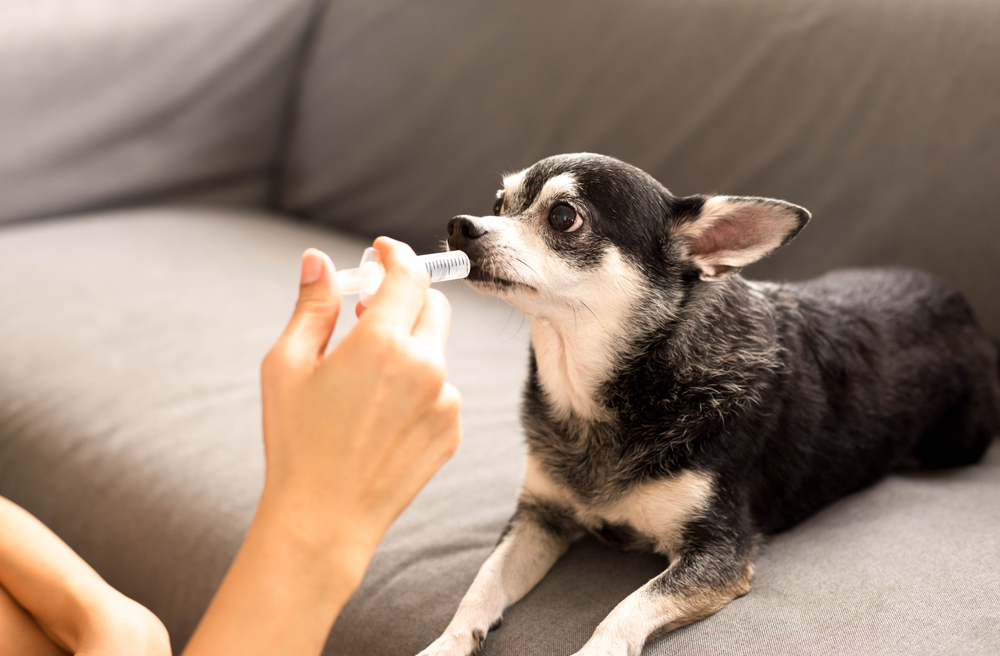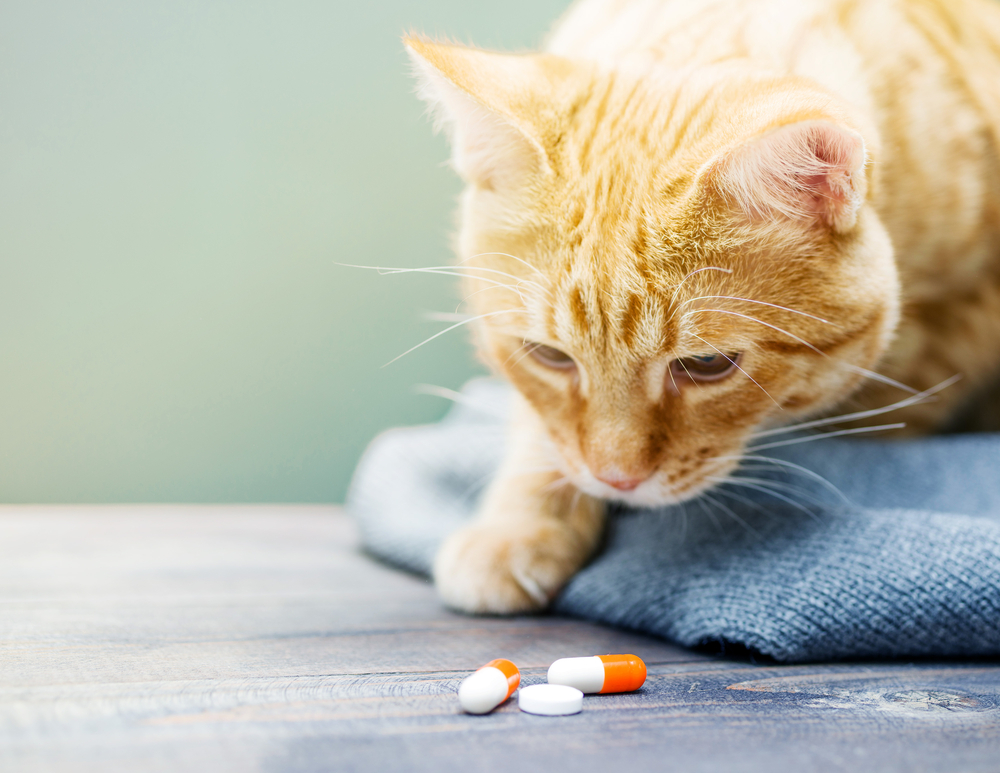Your pet will need medication during their life, including parasite prevention or treatment for a chronic condition. However, administering medication to pets can be daunting. Whether your pet needs a daily pill, liquid medication, or topical treatment, the key to successful pet medication lies in a combination of patience, technique, and a positive approach. In this guide, our Oliver Animal Hospital team shares tips and tricks to help you medicate your pet effectively and easily.
#1: Understand the directions for administering medication to your pet
A clear understanding of how to give your pet an oral, topical, or injectable medication is key, along with correctly following the label instructions. For example, if your pet has two antibiotics for a wound, ensure the oral liquid medication goes in their mouth and the topical antibiotic ointment goes on the wound, not vice versa.
Before administering your pet’s medication, double-check the label to verify the directions, dosage, frequency, and other pertinent information. Some oral medications should be given with a fatty meal or on an empty stomach, while certain ear medications work best on uncleaned ears. If you are unsure about how to administer your pet’s medication, ask our Oliver Animal Hospital team to demonstrate effective techniques and to share personal tips before you administer your furry pal’s medication at home.
#2: Gather the appropriate tools before medicating your pet
Before initiating your pet’s medication session, gather all your supplies to avoid fumbling around and causing stress and anxiety. Items you may need to medicate your pet successfully include:
- A towel or thin blanket — One of the best ways to restrain a small dog or cat safely without causing undue stress is with a towel wrap. Grab a thin blanket or bath towel to use as a comforting restraint tool.
- Ear cleaning supplies — Depending on the ear medication your pet has been prescribed, you may need to clean their ears before administration. Collect cotton balls and squares, a pet-friendly ear cleanser, and the medication. Avoid using cotton swabs, as you may inadvertently push debris further into your pet’s ear canal.
- A pilling tool — A pill gun is a slender tube that holds a tablet or capsule in one end, with a plunger at the other end to push a pill down your pet’s throat. If your pet tends to bite down when being manually pilled, use a pill gun to keep your fingers out of their mouth.
- Treats — High-value treats can be used as bribes, distractions, and rewards, so come armed to medication sessions with plenty of your pet’s favorites. Peanut butter, spray cheese, hot dogs, canned food, liverwurst, and other special treats can make your pet’s medication session a success.
- Toys — A squeaky toy or plush animal can be the distraction or reward you need to medicate your pet successfully. Some dogs are known for carrying around stuffed animals as their comfort object, so if your furry pal has a favorite toy, try to get your pet to focus on their beloved toy rather than on a syringe.
- A helper — Another person with whom your pet is comfortable can be a huge help in distracting and restraining your four-legged friend during a medication session.
#3: Use pet treats to your advantage
Nothing is more effective than food at helping ensure your pet receives their medication. Reserve a special treat that is only offered during medication sessions so your pet will look forward to receiving medication. Using small pieces of a strong-smelling food or treat, try the following tactics:
- Treat train — Form a train of treats for your pet to greedily inhale, hiding the pill in one of the bite-sized pieces.
- Friendly competition — You can’t give one pet a treat and ignore the others, so use that to your advantage. Dole out treats to all your pets, reserving the treat-wrapped pill for your pet who needs the medication. Each pet will eagerly gobble down their treats before their furry friends can get to them.
#4: Practice when your pet is healthy
If you only try to handle your pet’s mouth, ears, and eyes when they are ill or injured, they will become wary of all handling attempts. When your pet is young, acclimate them to having these body parts handled, rewarding your furry pal for cooperating, and medication sessions will go smoothly.
#5: Ask about alternative medication formulations for your pet

In many cases, oral medication can be compounded into a different formulation to make administration as easy as possible. For example, if you cannot safely give your cat a pill, ask if the tablet can be crushed and mixed with water, then syringed into their mouth. In addition, ask whether a medication can be included in a flavored oral liquid from a compounding pharmacy to make the medication appealing to your pet.
Medicating your pet may seem challenging at first, but with patience, a positive approach, and the right techniques, you can make the process go smoothly. If you’re still struggling to medicate your pet, contact our Oliver Animal Hospital team for additional suggestions and alternatives.







Leave A Comment